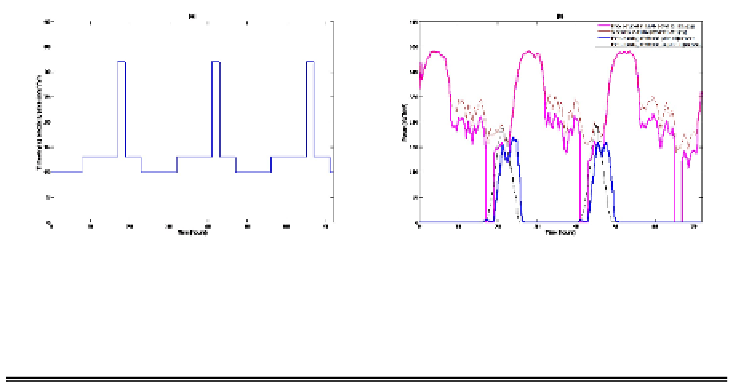Information Technology Reference
In-Depth Information
with and without the inclusion of the price modulated available power term
(
Δ
(
k
)) in (3)).
Table 1 provides a summary comparison of the different charging strategies
considered in the paper. From the table it can be seen that
SmartP
(i.e. price-
adjusted AIMD) EV charging provides the best overall performance with the
lowest line voltage drops, smallest maximum power requirements and the cheap-
est charging rate (40-50% less than with uncontrolled charging).
Fig. 3.
(a) Plot of the TOU electricity price signal
E
(
k
); (b) Comparison of EV loads
obtained using AIMD smart charging with and without price adjusted available power.
Tabl e 1.
Comparison of all charging scenarios considered
Scenarios Mini Voltage(p.u) Max Load
1
(%) Energy
2
(kWh) Cost(cents/kWh)
NoEV
0.92
108
-
-
Unctrl
0.87
165
10.15
19.70
Smart
3
0.91
118
10.15
12.69
SmartP
4
0.92
109
10.15
10.90
5 Conclusions
In this paper, a novel distributed smart EV algorithm has been proposed for
managing EV charging on a low-voltage residential distribution network. The
algorithm, which is based on the AIMD EV charging algorithms proposed in [5],
is designed to take account of capacity, infrastructure and voltage constraints
on the network and encourage EV charging at off-peak times. Using a simula-
tion of a representative low-voltage residential distribution network with 50%
EV penetration the proposed algorithm has been benchmarked against uncon-
trolled charging and shown to effectively mitigate the impact of EV charg-
ing on the grid. Our results show that for the scenarios considered the pro-
posed AIMD charging strategy is able to comfortably support up to 50% EV
1
Maximum loading as a percentage of the sub-station rating (400kVA).
2
Average energy per EV per day.
3
AIMD smart charging without price adjustment.
4
AIMD smart charging with price adjustment.







Search WWH ::

Custom Search